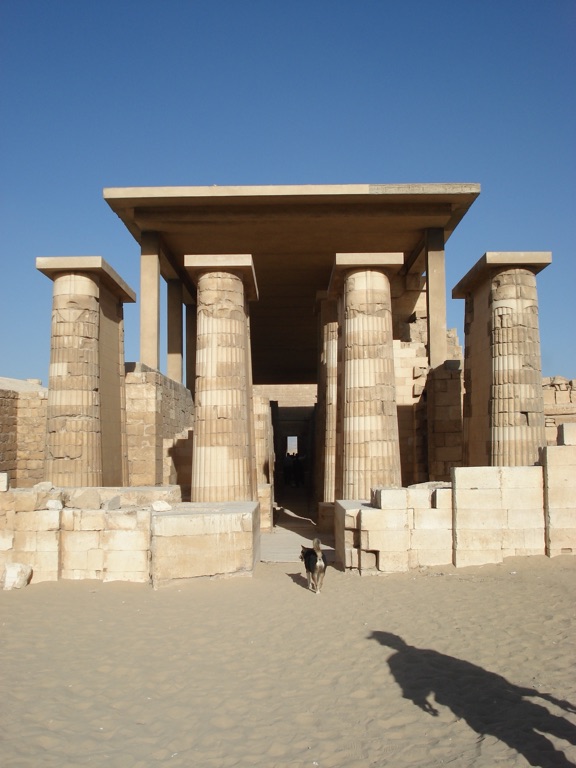The Mortuary Complex of Djoser: A Comprehensive Exploration
The mortuary complex of Djoser, located in Saqqara, Egypt, is one of the most significant archaeological sites in the world. Built during the 27th century BC for Pharaoh Djoser by his architect Imhotep, the complex is known for its step pyramid, the first colossal stone building and the earliest colossal stone pyramid constructed in Egypt. The complex is a significant reflection of early development in stone architecture and the belief in the afterlife in ancient Egypt. It also offers valuable insights into the reign of Pharaoh Djoser and the evolution of burial practices during his time.
Get your dose of History via Email
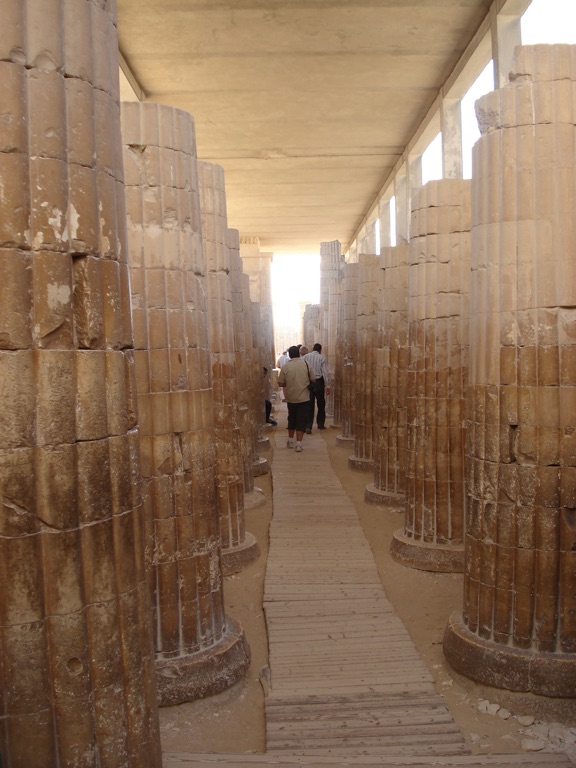
What is the historical significance of the mortuary complex of Djoser and what does it tell us about ancient Egyptian burial practices and beliefs?
The mortuary complex of Djoser holds immense historical significance as it represents a pivotal point in ancient Egyptian architecture and burial practices. The complex, designed by Imhotep, was the first to be built entirely out of stone, marking a departure from the traditional mud-brick tombs. This shift symbolizes the belief in the permanence of life after death, as stone was seen as an eternal material.
The design of the complex also reflects the ancient Egyptian concept of a Pharaoh’s journey to the afterlife. The Step Pyramid, the central feature of the complex, was believed to facilitate the Pharaoh’s ascension to the heavens. This idea was a precursor to the more familiar smooth-sided pyramids, which were designed to symbolize rays of sun.
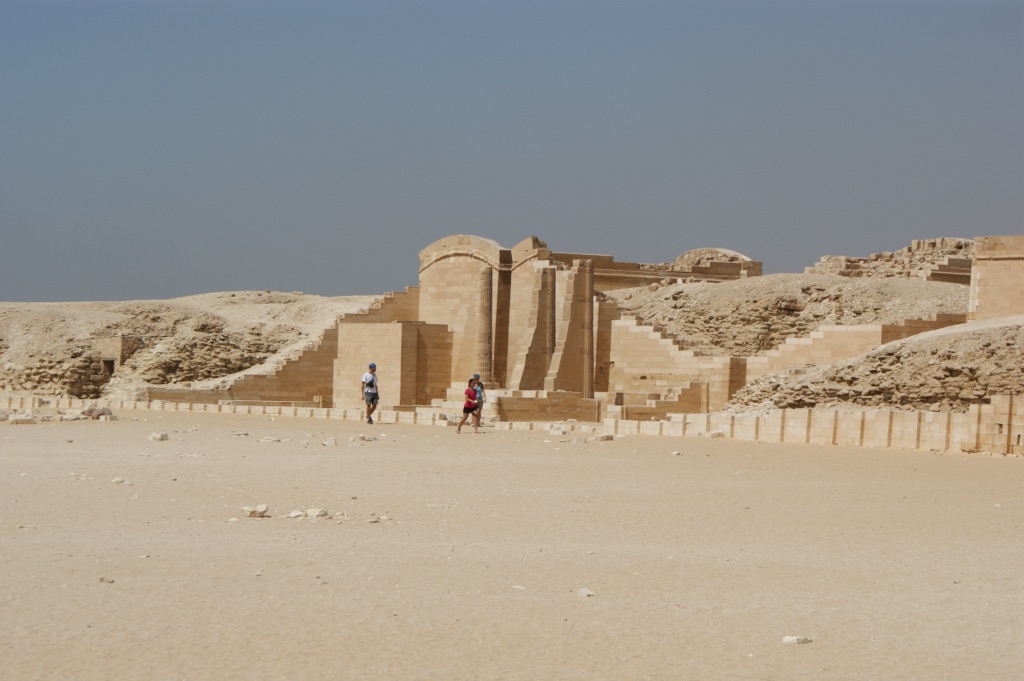
The mortuary complex was not just a tomb, but a place for the Pharaoh’s Ka (spirit) to receive offerings and sustenance in the afterlife. The elaborate system of tunnels and chambers beneath the pyramid, where the Pharaoh’s body was laid to rest, further highlights the importance of the afterlife in ancient Egyptian beliefs.
Moreover, the presence of numerous statues of Pharaoh Djoser throughout the complex underscores the belief in the Pharaoh’s divine nature and his role as an intermediary between the gods and the people. These statues were thought to serve as a backup vessel for the Pharaoh’s Ka, should anything happen to his body.
Finally, the inclusion of other structures such as courtyards, temples, and shrines within the complex suggests that it was a place of worship and celebration, possibly hosting festivals and rituals related to the cult of the Pharaoh and the gods.
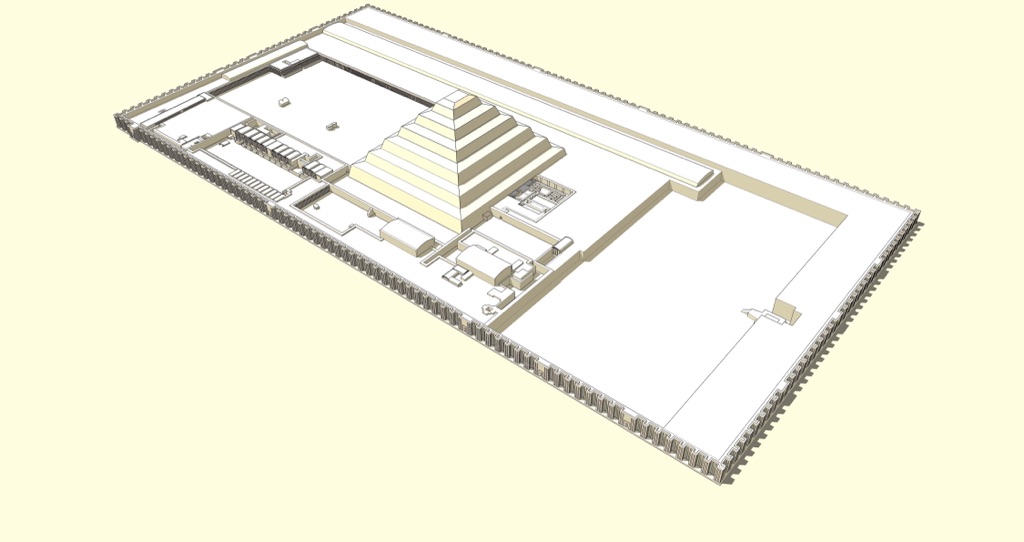
What are some of the key architectural features and discoveries made at the mortuary complex of Djoser?
The mortuary complex of Djoser is renowned for its unique architectural features. The most prominent of these is the Step Pyramid, which stands at a height of approximately 60 meters and consists of six steps. This was a significant development from the earlier mastaba-style tombs, introducing a new form of royal burial architecture.
Underneath the pyramid lies an intricate network of corridors and rooms, totaling nearly 6 kilometers in length. This subterranean world includes galleries for offerings, burial chambers for royal family members, and a central burial chamber for Djoser himself. Remarkably, the walls of these tunnels were adorned with blue faience tiles, imitating the reed matting used in earlier, non-stone structures.
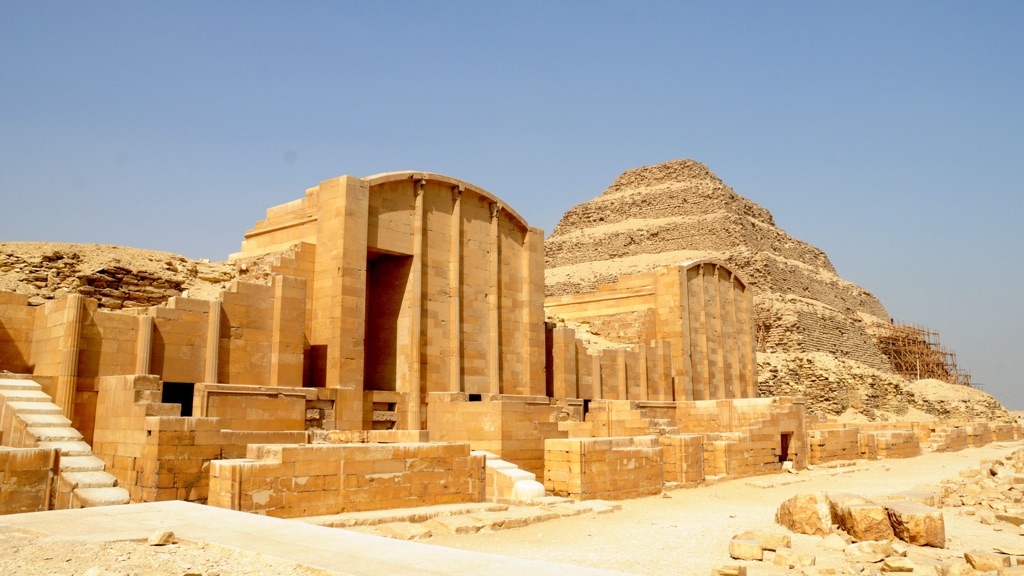
Another key feature of the complex is the Heb-Sed court, a large, open courtyard designed for the celebration of the Heb-Sed festival, a ritual of royal rejuvenation. The court features a series of dummy buildings, including chapels and pavilions, and is surrounded by a façade of small, engaged columns, representing the palace façade.
The complex also houses the South Tomb, a structure whose purpose remains a mystery. Some suggest it was intended to house the Pharaoh’s Ka, while others believe it may have been a symbolic southern tomb for the northern Pharaoh.
Among the significant discoveries made at the complex are the well-preserved blue faience tiles, several statues of Djoser, and the base of a satellite pyramid. The site continues to be a rich source of information for archaeologists studying the Old Kingdom period.
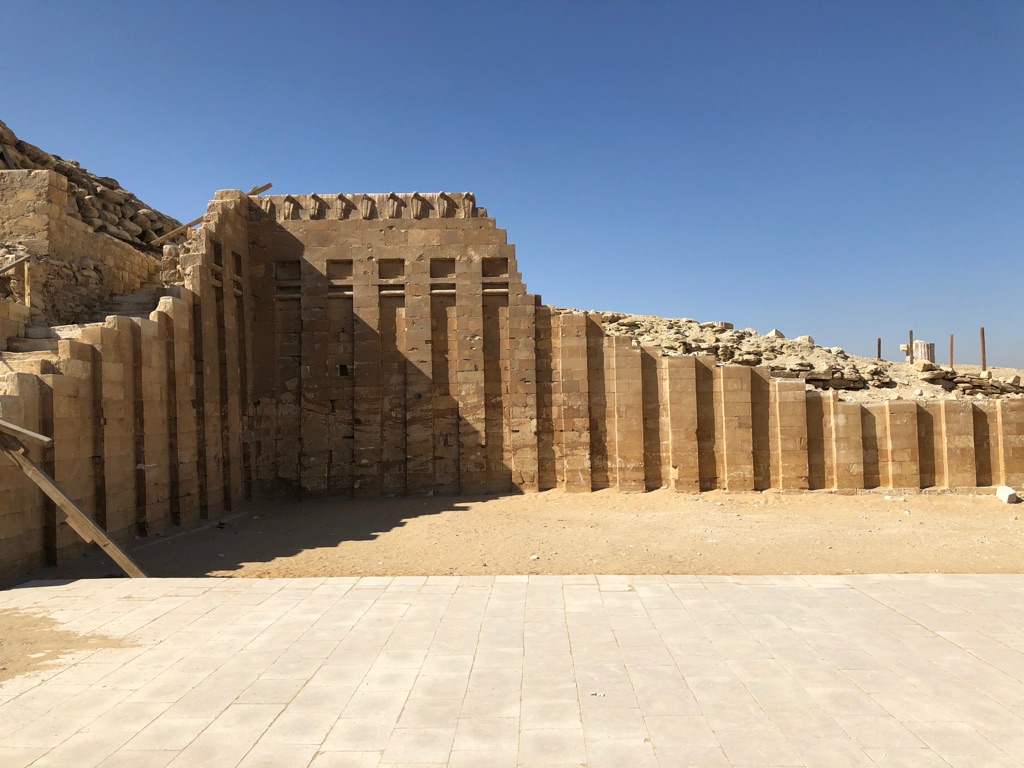
What is the historical significance of the mortuary complex of Djoser and what does it tell us about the reign of Pharaoh Djoser?
The mortuary complex of Djoser serves as a testament to the reign of Pharaoh Djoser, providing insights into his power, influence, and the socio-political context of his time. Djoser’s decision to commission such an ambitious project reflects his status as a powerful ruler. The complex, with its scale and grandeur, was a statement of royal authority and divine status.
The choice of Saqqara as the location for the complex also speaks volumes about Djoser’s reign. Saqqara was the necropolis for the ancient Egyptian capital, Memphis. By choosing to be buried here, Djoser aligned himself with the religious and political center of Egypt, further solidifying his power.

Furthermore, the reign of Djoser marked a period of prosperity and stability in Egypt, as evidenced by the resources invested in the construction of the complex. The intricate design and craftsmanship involved in the construction indicate the availability of skilled labor and the existence of a well-organized society.
The complex also provides evidence of Djoser’s religious beliefs and practices. The presence of numerous temples and shrines within the complex suggests that Djoser was a devout follower of the traditional Egyptian gods. His decision to build his tomb in the form of a Step Pyramid may have been influenced by his belief in the Pharaoh’s divine role as the intermediary between the gods and the people.
Lastly, the reign of Djoser marked the beginning of the Pharaonic tradition of building pyramids as royal tombs, a practice that would continue for centuries and become one of the defining features of ancient Egyptian civilization.
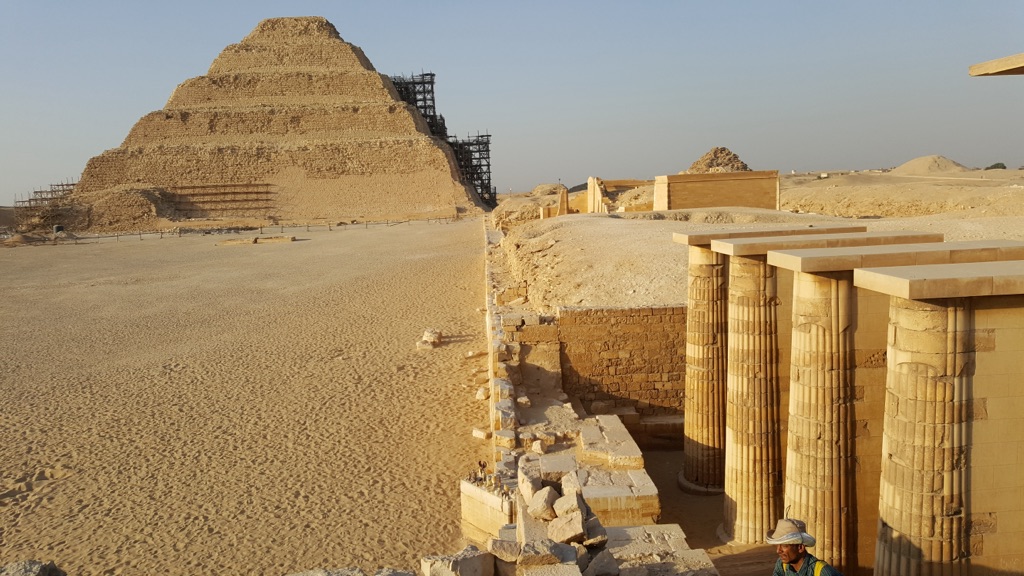
What role did the mortuary complex of Djoser play in ancient Egyptian burial practices and beliefs about the afterlife?
The mortuary complex of Djoser played a significant role in shaping ancient Egyptian burial practices and beliefs about the afterlife. As the first pyramid, it set a precedent for future royal tombs and was a tangible representation of the ancient Egyptian concept of the afterlife.
The complex was designed to ensure the Pharaoh’s successful journey to the afterlife. The Step Pyramid, with its stair-like structure, was believed to assist the Pharaoh’s ascension to the heavens. The subterranean chambers, where the Pharaoh’s body was laid to rest, were designed to protect and preserve the body for its journey to the afterlife.
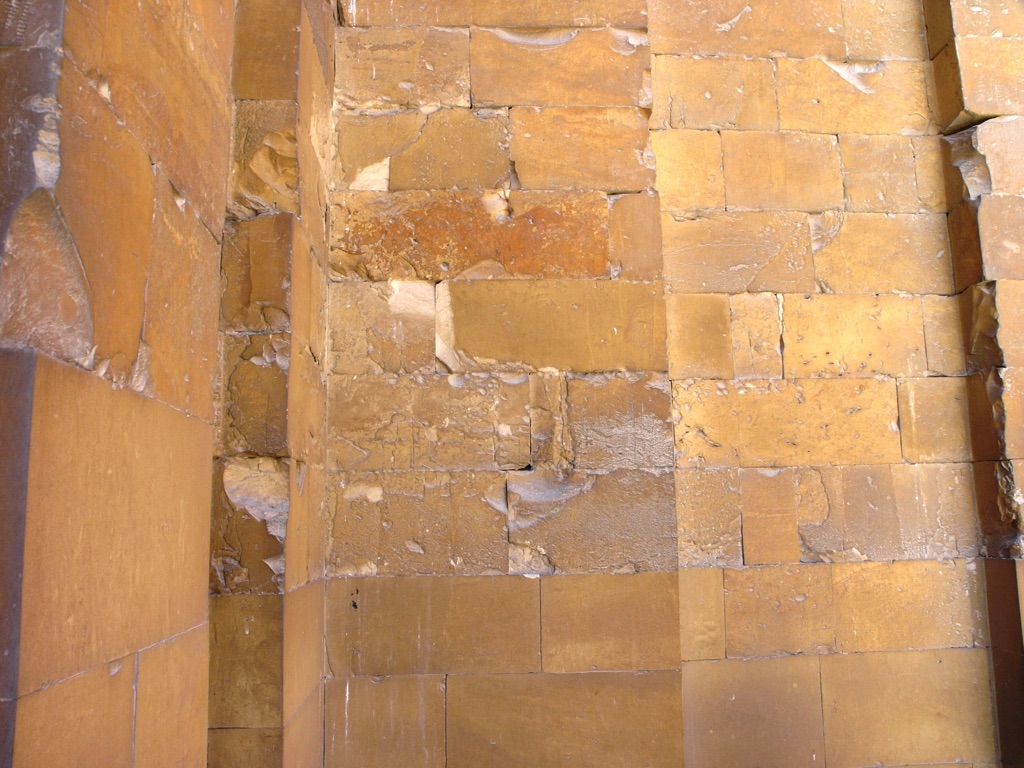
The complex also served as a place for the Pharaoh’s Ka to receive offerings and sustenance in the afterlife. The presence of offering tables and false doors in the complex highlights the importance of providing for the Pharaoh’s Ka in the afterlife.
Moreover, the complex played a role in the practice of ancestor worship. The numerous statues of Djoser found within the complex were likely used in rituals to honor and remember the deceased Pharaoh. These statues also served as a backup vessel for the Pharaoh’s Ka, should anything happen to his body.
Finally, the complex likely hosted festivals and rituals related to the cult of the Pharaoh and the gods. These events would have reinforced the belief in the Pharaoh’s divine nature and his role as an intermediary between the gods and the people.
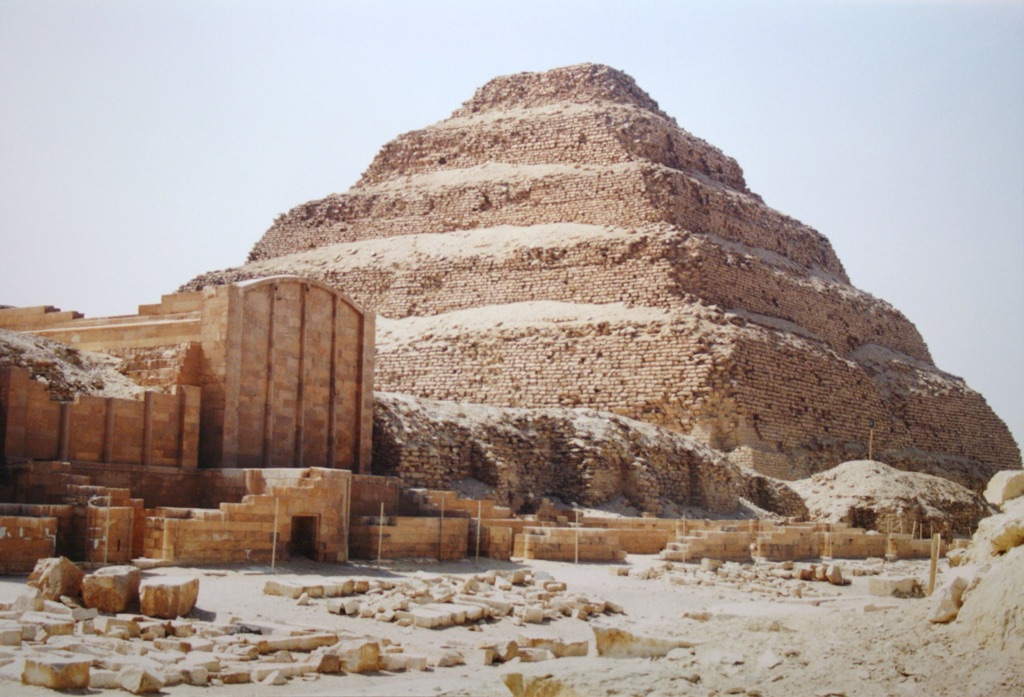
What is known about the construction techniques and materials used in the building of the mortuary complex of Djoser?
The construction of the mortuary complex of Djoser marked a significant shift in ancient Egyptian architecture. It was the first monument to be built entirely out of stone, a material that was associated with permanence and eternity.
The complex was primarily constructed using limestone, a material that was readily available in Egypt. The blocks of limestone were cut and shaped using copper tools, a task that would have required a large and skilled workforce.

The Step Pyramid, the central feature of the complex, was built in six stages, starting as a square mastaba and gradually evolving into a six-step pyramid. This process suggests that the design of the pyramid may have evolved during construction.
Underneath the pyramid, an intricate network of tunnels and chambers was carved out of the rock. These subterranean spaces were adorned with blue faience tiles, which were designed to imitate the reed matting used in earlier, non-stone structures.
The construction of the complex also involved the use of architectural elements such as columns and engaged statues, which were carved directly from the stone. These features demonstrate the high level of craftsmanship and artistic skill present in ancient Egypt during Djoser’s reign.
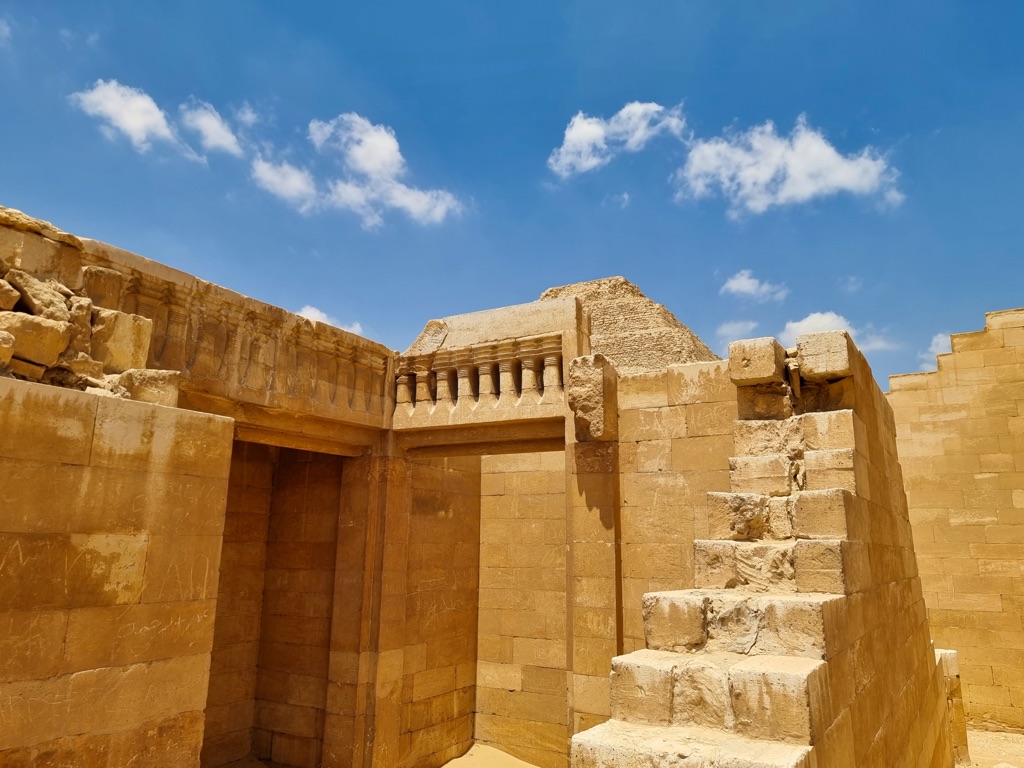
Conclusion and Sources
In conclusion, the mortuary complex of Djoser is a significant archaeological site that offers valuable insights into ancient Egyptian architecture, burial practices, and beliefs about the afterlife. It serves as a testament to the reign of Pharaoh Djoser and the socio-political context of his time. The complex also played a pivotal role in shaping ancient Egyptian burial practices and beliefs about the afterlife. The construction techniques and materials used in the building of the complex reflect the technological advancements and artistic skill of the time.

For further reading and research, the following sources are recommended:

